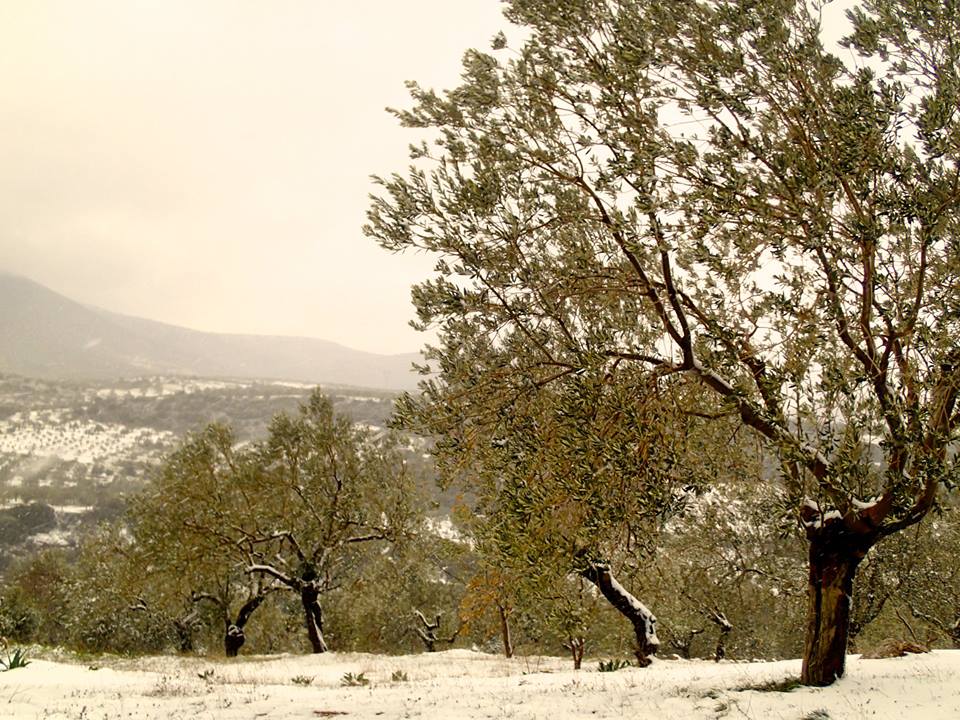
03 Jan Low temperature effects on olive tree inflorescence-XIONI ΣΤΟ RHIZOMA
Studies show that both the organ or organs of perception of low temperatures and the degree of localization of the flowering response to low temperatures, and to determine the relation of photoperiod and leaf area to the low-temperature requirement for flowering in the olive (Olea europaea L.) are critical for the formation of flowering bads in spring. It was found that the flowering response to low temperatures is localized in the portion of the tree exposed to such temperatures. Localized chilling treatments show that it is not necessary to chill the leaf blades in order to stimulate inflorescence formation, provided the stem and buds are chilled. With respect to inflorescence formation, experiments indicate that the olive is a day-neutral plant, with an obligate low-temperature requirement. Leaf area is important for inflorescence formation, but as little as 10% of the leaf area on small girdled shoots is sufficient to promote normal numbers of inflorescences. The influence of leaves on inflorescence formation is not translocated from one scaffold branch of a tree to another. Inflorescence formation on a small shoot, however, is influenced by the leaves on the surrounding parts of the tree, and this influence is intercepted by removing a ring of bark which includes the phloem. Darkened leaves, under certain conditions, promote inflorescence formation. Even though the leaves do not seem to be involved in the perception of low temperatures, it appears that low temperatures and the leaf influence must act concurrently in order to stimulate inflorescence formation.
The abstract comes from a very interesting study from the Botanical Gazette, University of Chicago Press, byWesley P. Hackett and H. T. Hartmann, Vol. 125, No. 1 (Mar., 1964), pp. 65-72, Stable URL: http://www.jstor.org/stable/2473393
